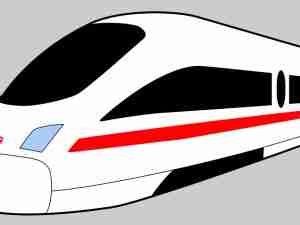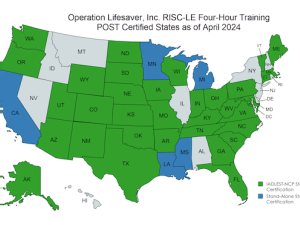Alstom, Siemens Forget High-Speed-Rail Feud Amid Asian Onslaught
By: | Sep 27 2017 at 04:13 AM | Intermodal
Alstom SA’s merger with the train-making arm of Siemens AG will mark the end of a bitter rivalry as the European rail industry’s biggest adversaries unite in an effort to fend off the challenge from China and Japan.
The ill-tempered contest between Alstom and Siemens has been a feature of the sector for decades and reached boiling point in 2011, when the pair engaged in a public spat over the safety of competing high-speed models they were pitching to Channel Tunnel express operator Eurostar International Ltd.
Now the French and German companies are set to join forces in a business with 15 billion euros ($18 billion) in combined sales as they seek to halt the advance of Asian giants including Beijing-based CRRC Corp. and Hitachi Ltd. of Japan. That seemed a very distant prospect at the height of the confrontation over the 600 million-euro Channel Tunnel tender.
As the supplier of Eurostar’s original fleet, Alstom had seemed to be in prime position to win the order with a modified version of its iconic TGV. Instead, the deal went to the Siemens Velaro e320, prompting the French company to suggest that the multiple engines powering the German train would pose a serious fire risk in the confines of the 30-mile undersea tunnel.
Siemens emerged victorious after France accepted a ruling from the European Union’s rail-safety body saying the Velaro presented no more of a danger than the TGV. The defeat in its home nation came as a body blow to Alstom, which had been regarded as rail royalty since the original Train à Grande Vitesse snatched the world speed record from the Japanese Shinkansen in the 1980s.
GE Deal
While the TGV was still the fastest railed vehicle after a 357.2 mile per hour run in 2007, the loss confirmed the pressure facing Alstom not just in the shape of Siemens but also from increasingly export-oriented Asian manufacturers and Canada’s Bombardier Inc., which had become the largest western train-maker following the 2001 purchase of Daimler AG’s Germany-based Adtranz arm.
The critical move in propelling Alstom toward a tie-up with Siemens came with the sale of the French group’s power-generation business to General Electric Co. in 2015, according to Maria Leenen, chief executive officer of German rail consultancy SCI Verkehr. While the French company gained GE’s signalling unit, giving it critical mass in one of the most profitable areas of rail technology, the transaction ultimately left it without the heft to fund expensive new train and engineering projects, Leenan told Bloomberg.
Though Alstom is of a similar size to the rail division of Munich-based Siemens, with annual sales of more than 7 billion euros, the German business is part of a group that ranks as Europe’s largest manufacturer with almost 80 billion euros in revenue and a product range spanning power grids and building controls to medical scanners, washing machines and wind turbines.
Yet Siemens, too, had seen the writing on the wall as overcapacity in Europe ate into rail margins, accentuated by the entry of Shinkansen partner Hitachi, which established its global headquarters and a major factory in the U.K. after winning a 5.7 billion-pound ($7.7 billion) express-train contract there. The Tokyo-based group followed up by purchasing the signalling business of Italy’s Finmeccanica SpA in its largest-ever overseas deal.
All the while, European train-makers were facing growing competition from China, where train output began to eclipse Bombardier, Alstom and Siemens from 2011. The threat was ratcheted up in 2015 when a government-led merger of China CNR Corp. and CSR Corp.—formerly competing groups based in the north and south of the country—created a new global No. 1 in CRRC.
The Chinese giant has yet to penetrate the most lucrative Western markets, but already dominates sales to cost-sensitive economies in Africa, Eastern Europe, Latin America and Southeast Asia. CRRC can build a high-speed train for about 20 million euros, half the price of a European model.
Siemens had sought to head off the GE-Alstom deal in 2014 with a proposal that would have handed its rail operations to the French company in exchange for the power business.
The failed intervention created resentment between Siemens CEO Joe Kaeser and his then opposite number Patrick Kron, with the German company turning to Bombardier in its bid to stem the Asian tide through proposed joint ventures in train manufacturing and signaling. While that plan, which until this month seemed set to go ahead, would have helped to restructure rail capacity in Germany, it would have fallen short of creating a European champion capable of assuming a “quality-leadership role” in the global market, Leenen said.
The surprise Alstom transaction will do just that, though a test will come when the new company has to rationalize its lineup and production base for the next generation of rolling stock, she said. For now the overlapping ranges of subway trains, trams and commuter and express models is likely to survive, with the TGV and Velaro making the unlikeliest of stablemates.







